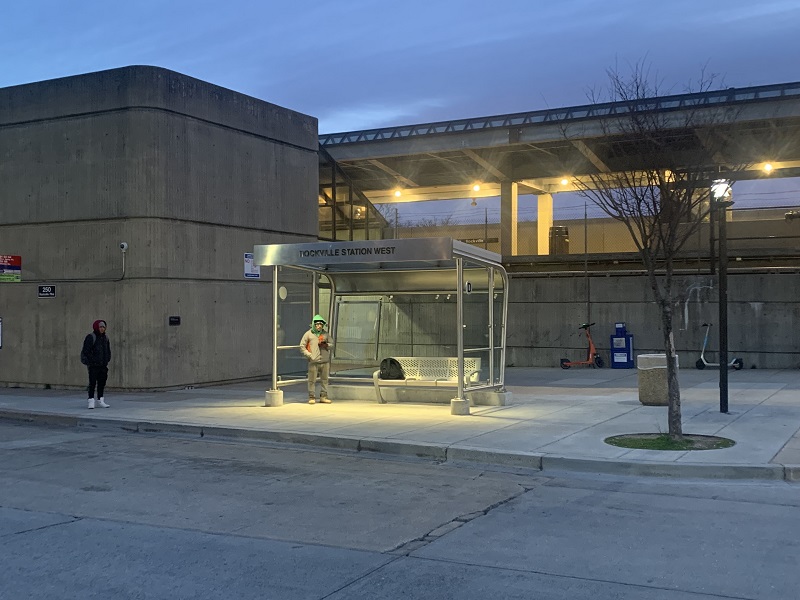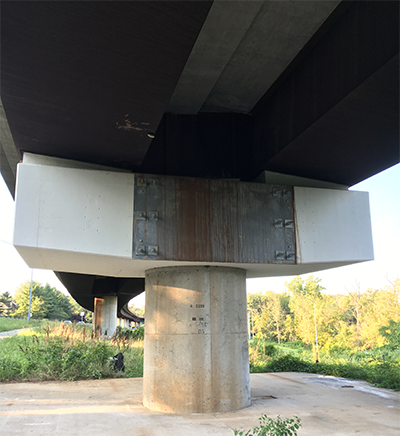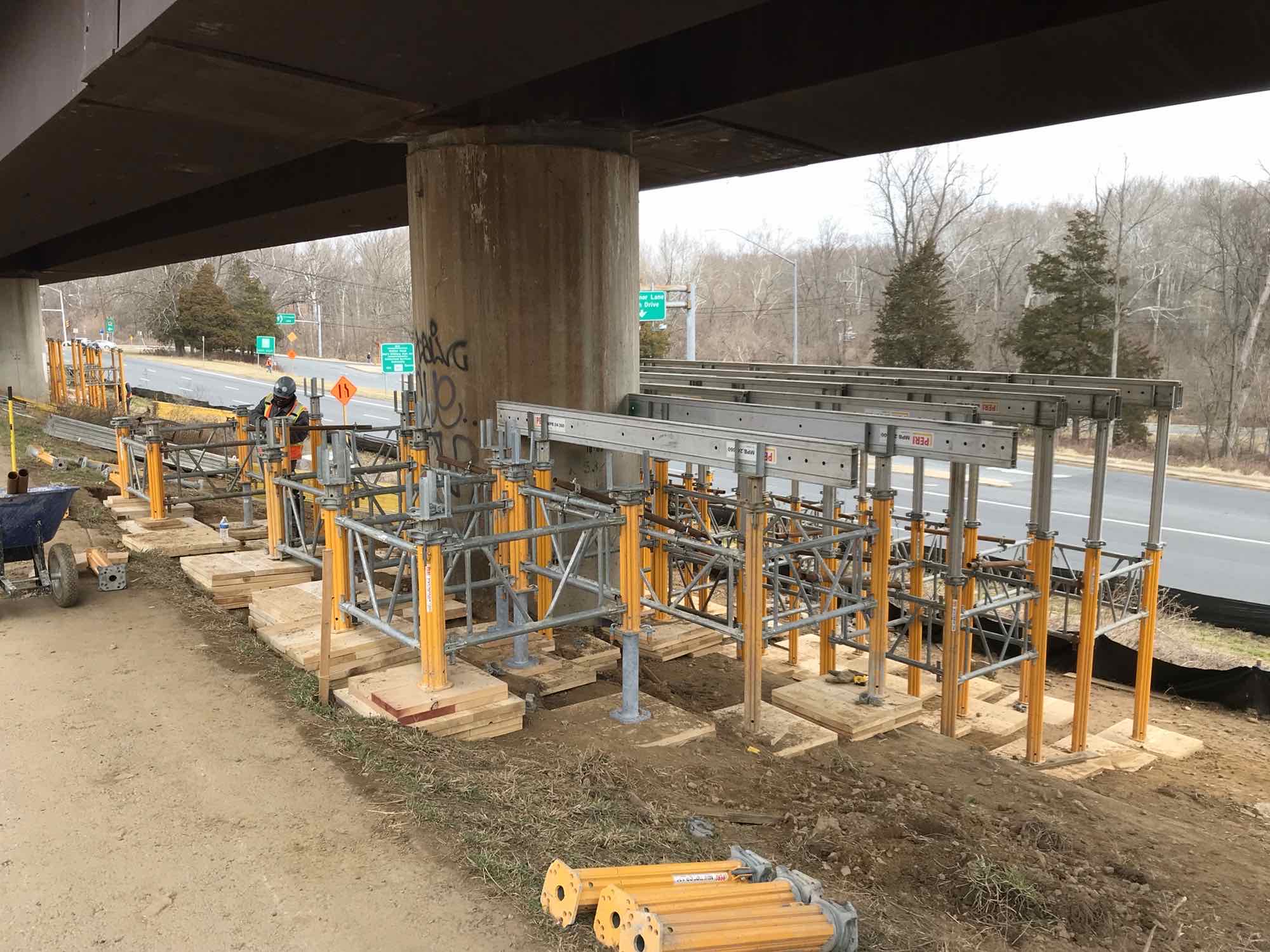Aerial Structures Rehabilitation Project
History of Aerial Structures
An aerial structure is a raised feature that allows a railway line to avoid intersecting a road at the same level - both providing a safer route and avoiding disrupting traffic. The earliest aerial structure built to avoid level crossings over many city streets was the London and Greenwich Railway, built on a brick viaduct of 878 arches, built in the late 1830s. During the 1840s, other plans for elevated railways in London never came to pass.
From the late 1860s onward, aerial structures or elevated railways became popular in United States cities.

Aerials Structures and Metrorail
The Metro system includes nearly 20 miles of tracks atop large above-ground aerial structures. These structures allow trains to pass over traffic and various types of terrain. Now almost 45 years old, many structures are showing signs of normal aging due to exposure to the elements and supporting Metro trains, which can weigh up to 680,000 pounds and pass by every few minutes during the day.
The Aerial Structures Rehabilitation Project aims to reinforce the structural integrity of Metro's bridges and aerial structures to provide safe and reliable Metrorail service for years to come.
This project is part of Metro's 10-year, $15 billion Capital Improvement Program, which advances construction and rehabilitation projects that ensure a state of good repair for critical regional infrastructure.
Construction Strategy
|
Metro and its contractors developed an innovative construction strategy to rehabilitate the structures under this project in the safest and quickest way possible, while minimizing service impacts to customers. This strategy includes adding new "hammer heads" to the existing aerial structure columns. This approach eliminates the need for extended station closures during construction.
|

"Hammer heads" help extend the life of the aerial structures by strengthening the connections between the column and beams, improving the load capacity, and preventing additional deterioration due to train vibrations.
|
Timeline
The Aerial Structures Rehabilitation Project began in summer 2021 and is expected to be completed by winter 2024. Overall, the project includes repairs on 11 aerial structures including:
- Rockville Station canopy
- Completed Fall 2021 – Winter 2022
- Between West Hyattsville and Fort Totten stations – two bridges
- Completed summer 2021
- Between Grosvenor-Strathmore and Medical Center stations – one aerial structure
- Work began Winter 2023
- Work began Winter 2023
- Between Stadium-Armory and Minnesota Ave stations – one aerial structure
- Work began Fall 2023
- Between Van Dorn St and King St-Old Town stations – three bridges
- Completed Fall 2022
- Completed Fall 2022
- Between Naylor Rd and Branch Ave stations – three bridges
- Winter 2023 - Fall 2023
The Aerial Structures Rehabilitation Project will continue concrete repairs, weatherproof coating application and joint replacement on structures through 2023. At the Naylor Road and Branch Avenue sites, over 130,000 square feet of concrete will be repaired, equal to roughly 28 basketball courts.
Project Update - Work Between Grosvenor Lane and Tuckerman Lane
Stress testing and other finishing work including erecting post-tension bars, tendons and grout, laying concrete and removing scaffolding at nine piers is scheduled for completion by fall 2023.
Reinforcement work on the final two piers along Rockville Pike will start in February 2024 and will coincide with Metro’s scheduled March outages. This final phase of work will include erect scaffolding, pour concrete, install post-tension bars, tendons and grout and removing scaffolding. Once the work is completed, the current maintenance of traffic along Rockville Pike will be adjusted to reopen lanes that are currently closed. Please note that a future phase of the project that has yet to be scheduled will require the resumption of lane closures.
Allow for extra time when traveling in this area.
Community Impacts
 Maintenance work underway on the aerial structure between Grosvenor-Strathmore and White Flint stations
Maintenance work underway on the aerial structure between Grosvenor-Strathmore and White Flint stations
Construction on the remaining aerial structures may require weekend shutdowns, overnight work, or lane closures. Customers and residents near all work sites may also notice noise from construction. Potential noise sources include concrete delivery trucks and pumps, generators, construction vehicles and other equipment. If you have additional questions or concerns, please contact us.
For more information on service impacts, including travel alternatives for weekend shutdowns, visit check out our weekend advisory.